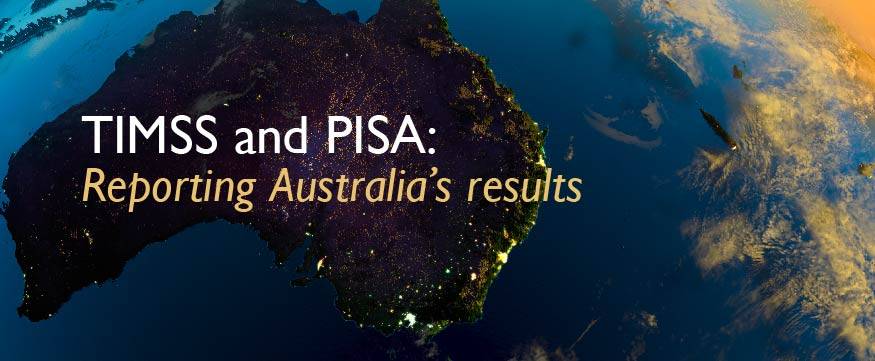
Australian report card: Time to address disadvantage is now
Research 15 Mar 2017 5 minute readTwo major reports on student achievement confirm little change in the gap between advantaged and disadvantaged students over the past 15 years.
Australian report card: Time to address disadvantage is now
The 2015 Trends in International Mathematics and Science Study (TIMSS) and the 2015 Programme for International Student Assessment (PISA), released by the Australian Council for Educational Research (ACER) this month, show that the decline in the achievement of disadvantaged students is particularly worrying, and presents in many different ways.
Dr Sue Thomson, ACER Director of Educational Monitoring and Research, and lead author of the TIMSS 2015: Reporting Australia’s results and PISA 2015: Reporting Australia’s results reports, said TIMSS and PISA indicate that disadvantage remains an issue.
‘Findings from PISA reveal that the difference between advantaged and disadvantaged students is equivalent to around three years of schooling,’ Dr Thomson said.
Socioeconomic background
Investigating background and demographic data, the reports find that students have higher achievement when: they are from a high socioeconomic background; there is a strong school emphasis on academic success; they have a strong sense of school belonging; and they are not bullied.
‘Findings from PISA reveal that the difference between advantaged and disadvantaged students is equivalent to around three years of schooling,’ Dr Thomson said. ‘It also matters which school a student attends.
‘PISA shows that the school a student attends has an impact on outcomes. Disadvantaged students in average socioeconomic level schools, for example, are almost a year of schooling higher than those in disadvantaged schools. Similarly, disadvantaged students in advantaged schools are more than one year of schooling higher than those in average socioeconomic level schools.’
- TIMSS shows that students attending schools with a more advantaged student body had average achievement more than 60 score points higher than those attending a school with a less disadvantaged student body, this being equivalent to almost one TIMSS benchmark (the TIMSS ‘Advanced international benchmark’ being 625 score points; the ‘High international benchmark’, 550 score points; the ‘Intermediate international benchmark’, 475 score points; and the ‘Low international benchmark’, 400 score points).
- PISA shows that the difference between advantaged and disadvantaged students in Australia is the equivalent of around three years of schooling.
- PISA shows that, in Australia, the effect of socioeconomic background on performance in scientific literacy was higher than on average across the OECD.
The impact of teachers
While the reports reveal that socioeconomic factors matter, they show that schools and teachers matter, too.
Students completing PISA reported classroom discipline levels that placed Australia below the OECD average. About one-third of the students in affluent schools, and about half of those in disadvantaged schools, reported that in most or every class there was noise and disorder, students didn’t listen to what the teacher said, and that students found it difficult to learn.
Similarly, TIMSS showed a clear relationship between the achievement of Australian students and principals’ reports of school discipline problems.
While TIMSS and PISA show that disadvantaged students are less likely than their advantaged peers to report that their teachers are very engaging or supportive, the good news is that when they do experience very engaging or supportive teaching, they – and their advantaged peers – have higher achievement than those students who face less engaging or supportive teaching.
Both TIMSS and PISA report on students’ attitudes towards learning, and show that more positive attitudes towards learning are associated with higher achievement levels. Nevertheless, TIMSS also shows that disadvantaged students on average like mathematics and science less, are less confident about and value mathematics and science less, and have a lower average achievement than their advantaged peers.
Indigenous and remote students
TIMSS 2015 indicates that Indigenous and non-metropolitan students face particular issues. TIMSS shows that substantially fewer Indigenous students achieve the proficient standard for Australia than do their non-Indigenous peers. TIMSS also shows that students in provincial and remote schools are less likely to achieve the standard. ‘We have seen no improvement in either case in 20 years of TIMSS testing and reporting,’ Dr Thomson said.
TIMSS 2015 assessed approximately 630 000 students in Years 4 and 8 across the participating countries, including a nationally representative sample of around 16 000 Australian students from 570 schools. PISA 2015 assessed more than half a million students across the participating countries and economies, including a nationally representative sample of around 14 500 Australian students from 750 schools. ACER is the national project manager for TIMSS and PISA, and is releasing the reports on behalf of the Australian, and state and territory governments.
Further information:
To find out more about the TIMSS 2015: Reporting Australia’s results report, visit the Australian TIMSS website www.acer.edu.au/timss
To find out more about the PISA 2015: A first look at Australia’s results report, visit the Australian PISA website www.acer.edu.au/ozpisa
